The Amazing Ruby Throated Hummingbird
I often forget how influencial a small bird flying around weighing the same as a postage stamp affects the earth. Tiny and fierce, hummingbirds play a big role in the landscapes we walk amoungst. They are migratory birds going back and forth between tropical and temperate ecosystems thousands of miles apart, affecting the flow of energy and pollinating countless plant species along the way.
World wide, there are more than 300 species of hummingbirds. Twenty six species have been recorded north of the Mexican border in the continental United States.
In the Eastern United States east of the Mississippi we have one species, the ruby throated.
The males show their name with their ruby throats.
With their sleek little bodies weighing about 3 grams, females do not have the ruby red throat. We had a hummingbird get stuck on our porch and we gently caught her with a sheet. Holding that small body felt like holding air.
With their pointy beaks, the average hummingbird will dip into sugar rich flowers consuming about half it’s weight in sugar each day. It is a common misbelief that hummingbirds suck up their food when in fact they lick it up food with their tongues. They have a forked tongue with two partial tubes that pull the nectar to their throat for swallowing.
Because hummingbirds need to maintain their high metabolic rate to achieve hovering in flight, they feed 5-8 times per hour. Digestion is amazingly fast and the liquid passes through the digestive system in less than twenty minutes. Despite their high metabolism, they do no drink their fill at every feeding as the extra weight increases their energy consumption. However as night time approaches, the birds feed heavily storing as much as a third of its weight in nectar in its balloon-like crop. This reserve is digested over night as the bird sleeps.
Throughout this summer, we watched the humming birds have a constant battle over the feeders with the bees.
Hummingbirds are territorial due mostly to ensuring each has enough feeding grounds.
Although many birds might be seen feeding together, by nature hummingbirds are anti-social. Each one is concerned with ensuring they have access to enough food to meet their daily metabolic needs. Territorial adult males may be less aggressive toward females in their area.
Hummingbirds are renowned for the speed at which their wings beat and for a male ruby throated it is about 50-78 times per second. Their heart beats approximately 1,260 times per minute.
I loved the arched curve of her back in this photo and how it shows off the tail.
Humming birds have been documented to live up to 12 years, although the average life span is 3 to 5 years.
I loved seeing how they tuck in their feet.
These ruby throated have just started their migration back to Central America. They will fly 500 miles nonstop across the Gulf of Mexico and before starting they increase their body weight by 50%, storing energy as fat to burn for the crossing.
Good bye little birds. See you next year!
I am so lucky in my job that all summer long I have been able to watch humming birds buzzing about every day. I think they are one of the most entertaining birds to watch. Hummingbirds have had an interesting relationship with humans as we have marveled at them for their beauty, fearlessness and near magical qualities. Yet they are not immune to the impacts of human activity. Large scale clearing of natural vegetation for agriculture, commercial and residential development have disrupted important resting areas along their migratory routes. Overgrazing by stock cuts down on naturally regenerating flowers removing their food sources. Nectar plants thrive in rich soil left by natural forest fires and long term suppression of fires has also altered the composition of the soil. The use of pesticides, especially in public garden spaces also takes a significant toll on the small birds.
Observing these mighty little creatures, it seems like nothing should be able to stop them. Indeed, they are one of the most adaptable species of birds. But just because they are such a powerful little animals does not mean that over time our actions will not affect them. One of the biggest ways to help hummingbirds is to not use chemicals or pesticides in your yard if you have flowers. Even if you think hummingbirds do not take up residency in your yard, it doesn’t mean they don’t stop for a snack along the way. Find out if your local municipal parks use pesticides or not for their gardens and if they do, ask them to stop.
Whether or not hummingbirds reside in your yard, through simple, daily actions each of us can help create healthy hummingbird territories. At the lodge I work at in Vermont, news of our masses of hummingbirds made it’s way all the way to Ohio. Some how, some way, a lady in Ohio heard we had over twenty hummingbirds regularly eating from our feeders. A big hummingbird fan, she called for nothing more than to find out if it was true because she was so excited to hear the news.
It was true and so far we can say that is the case because countless other people whom we will never meet, somewhere along these little birds migration path are also helping to create healthy feeding grounds for animals.
Are you one of them?
* * *
How make hummingbird food:
Take a generous 3 cups water and mix with 1 cup sugar. Heat until just before boil. Let cool completely. (Do not put hot food in the feeders.)
Do not add any food coloring. It is not necessary and over time this unnatural substance can harm the birds.
Start the feeder early in the spring for your best odds at attracting them. If you put it out late spring or early summer, they may have already found other feeding grounds.
Each time you need to fill the feeder, add just a drop of bleach and rinse the feeder really, really well. This will help cut down on any potential mold build up from the sugar water being exposed to the hot sun. We didn’t do this the first year and spent a lot of time cleaning the feeders as any mold intake can be quite harmful to the little birds. This year, we strictly washed the feeders each time we had to refill them and it made a big difference in keeping the feeders clean.

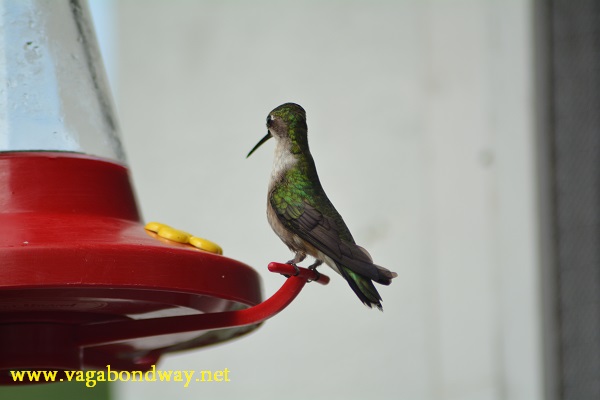

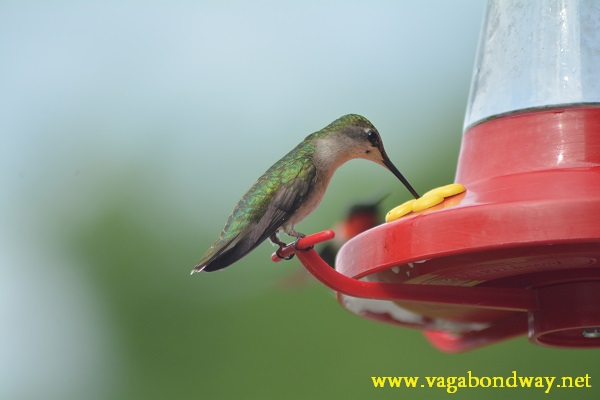
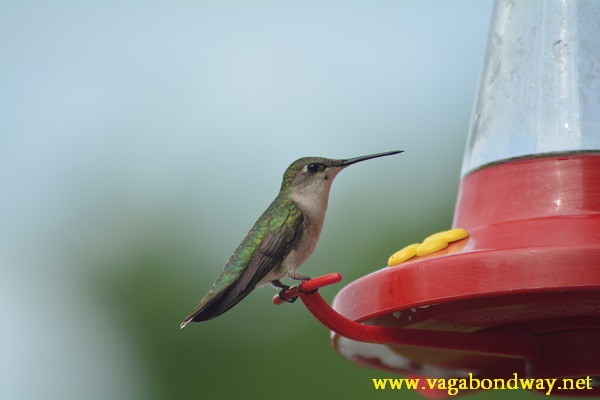
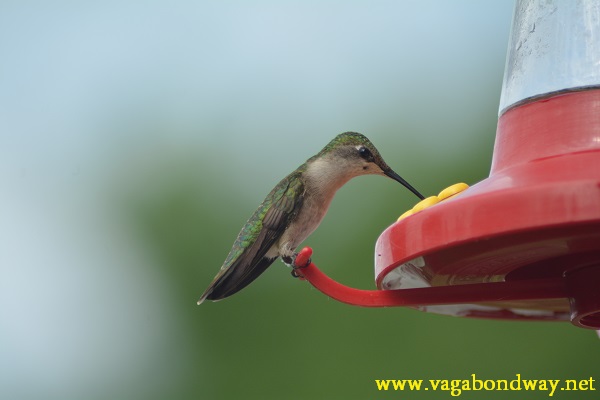
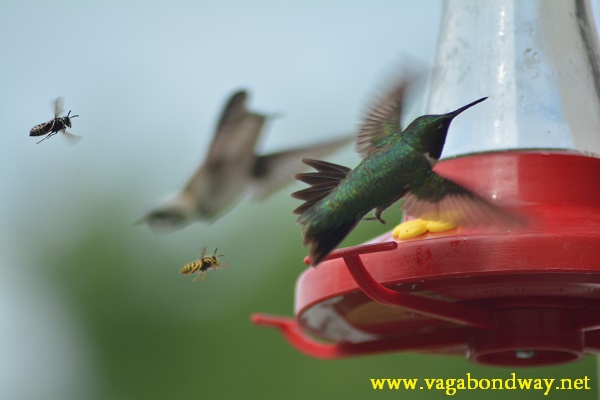
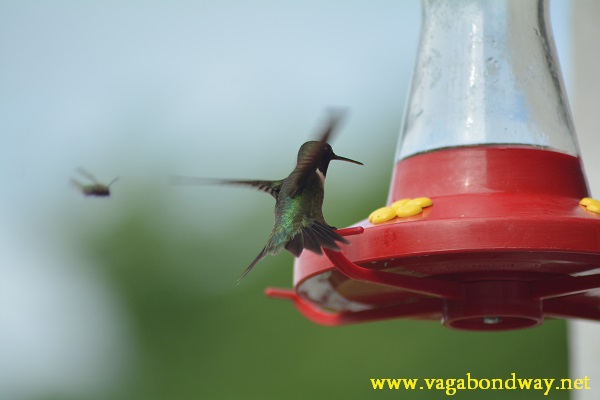
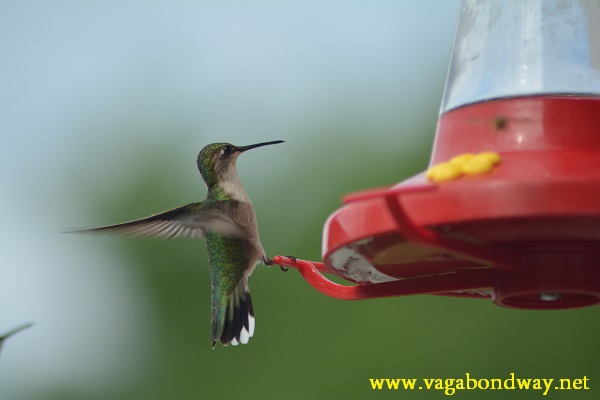
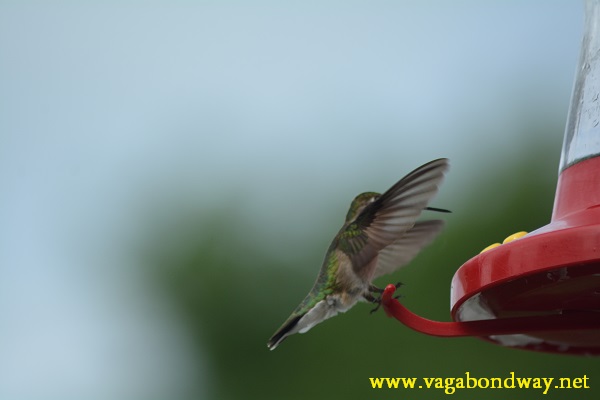
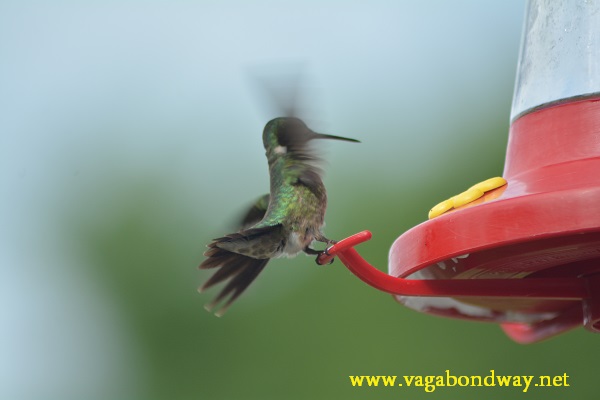
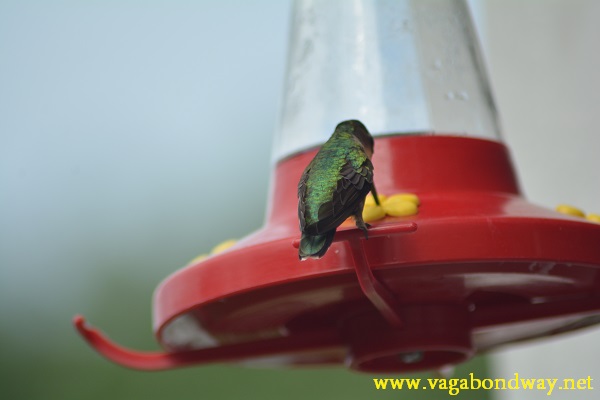
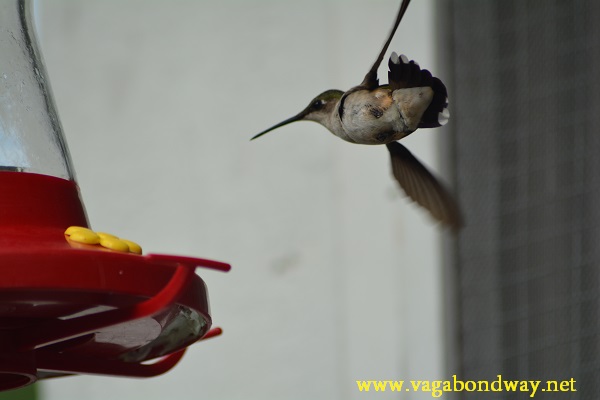
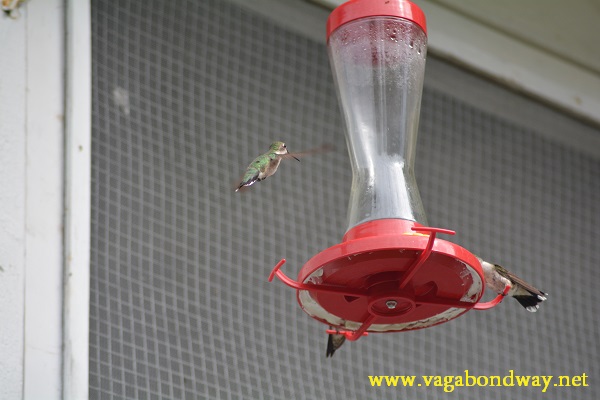
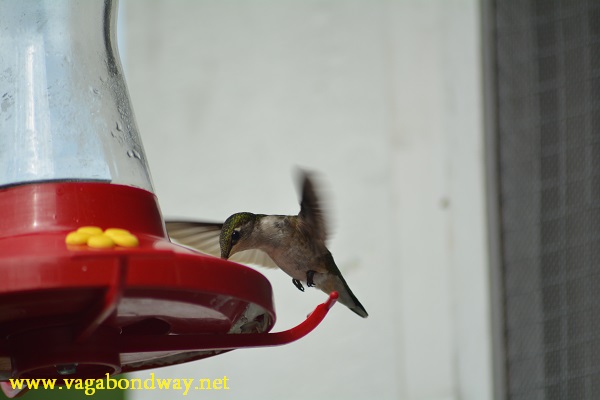
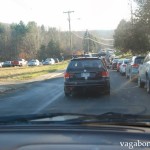 Previous Post
Previous Post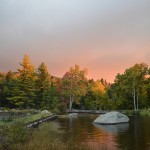 Next Post
Next Post
Another GREAT and informative post! Everyone loves hummingbirds. What a sight it must have been to have over 20 flying around!!!
Oh we have loved our hummingbirds! They are really the center piece of conversations and many people have passed there time sitting on the grass trying to get photos of them. We are so lucky to have so many coming from dawn to dusk for the feeding frenzy.
Oh nice post. I like the photos that have have the bees in them. Makes me think of the time at Nick and Maria’s when you thought the bees were baby hummingbirds 🙂
Oh geez, I don’t even remember that. But I always think of how many hummingbirds they have as well. We are slowly gaining speed on attracting more hummingbirds each year. 🙂
Enjoyed the article and especially the pics. Stay safe!
Thanks Brian! We sure love our hummingbirds here. You stay healthy and safe yourself. Thanks for the comment! 🙂
hey great pics again my sister barb has 2 hummingbird feeders and so does my dad they both love to watch them
Thanks Debbie! Having hummingbird feeders is non-stop entertainment – they’re better than TV. And they make such a flurry of noise with their wings and chirps.